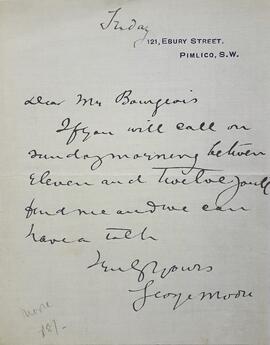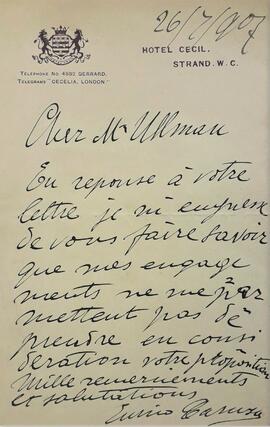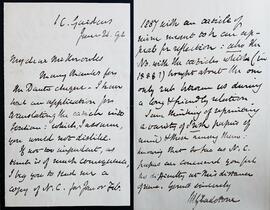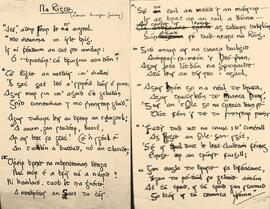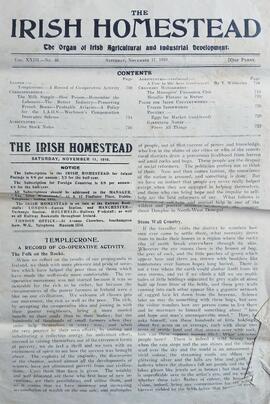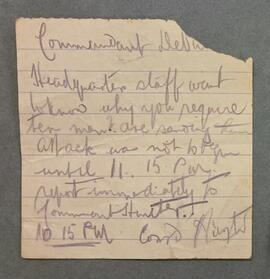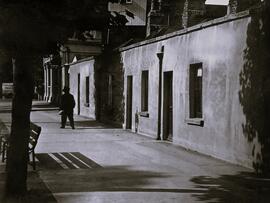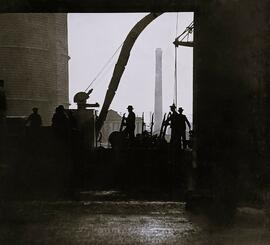A letter from General Sir John Moore. The letter refers mainly to military matters. An endorsement on the final page reads ‘Introduction to General [Grinfield]’.
A letter from George Moore, 21 Ebury Street, Pimlico, London, to [Maurice] Bourgeois. The letter reads ‘Dear Mr Bourgeois / If you call on Sunday morning between eleven and twelve you’ll find me and we can have a talk / truly yours / George Moore’.
A letter from Enrico Caruso, Hotel Cecil, Strand, London, to a Mr Ullman. A translation of the letter reads ‘Dear Mr Ullman / In response to your letter I wish to quickly inform you that my engagements do not permit me to take into consideration your proposal. A thousand thanks and salutations / Enrico Caruso’.
A letter from William Gladstone to James Thomas Knowles thanking him for the payment for his Dante article. He also suggests that he is ‘thinking of reprinting a variety of Irish papers’. With cover.
An Irish poem by Louise Imogen Guiney titled ‘Na Righthe’. The script is possibly a copy manuscript.
A letter from William Butler Yeats, 4 Broad Street, Oxford, to Miss [Barmer?]. Yeats refers to the delay in publishing his ‘collected edition’ due to ongoing work on his memoir. Yeats adds ‘if one has a position as a poet, the public is much more interested in one’s opinion on many useless things than in one’s poetry and yet if they did not think one a poet they would not be interested’. He also provides advice in relation to obtaining the best editions of his books. He refers to his ‘just published “Four Plays for Dancers”’ (1921). Other publications Yeats mentions include ‘The Wild Swans at Coole’ (1919) and ‘Poems’ published by T. Fisher Unwin. Yeats writes ‘The truth is my publishing arrangements are at sixes and sevens because I am letting works go out of print for the sale of this new collected edition’. He finishes by giving advice on the amount of money his correspondent should spend on previous editions of his books.
A copy of ‘The Irish Homestead’, Vol. XXIII, No. 46 (11 Nov. 1916). The edition contains an article titled ‘Templecrone: A record of co-operative activity’.
A note from Commandant Thomas Hunter to Commandant Éamon de Valera during the 1916 Rising. The pencilled note reads ‘Headquarters staff want to know why you require ten men’. It also suggests that an ‘attack was not to begin until 11.15pm’. The message concludes by asking de Valera to ‘report immediately to Commandant [Thomas] Hunter’. The note provides a time of 10.15pm.
A photograph of the cottage at 501 North Circular Road in Dublin where ‘Mrs Fylan, the sole remaining sister of Matt Talbot resides’. The Big Tree public house is visible at the end of the road.
A photograph of dockworkers near the gasometer on Sir John Rogerson’s Quay in Dublin.

